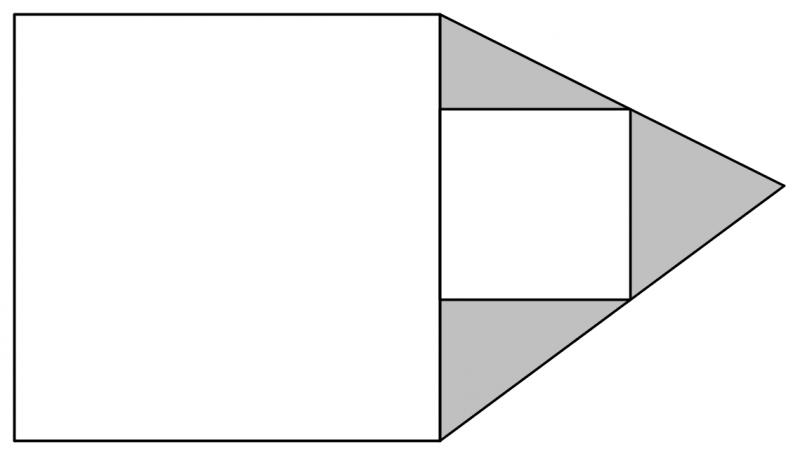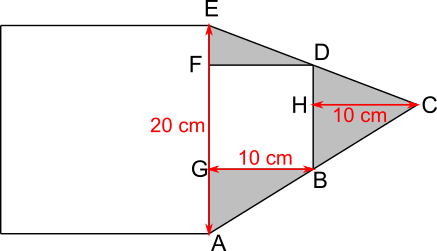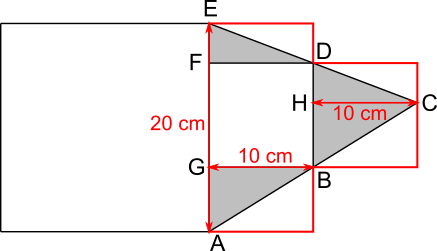Block Challenge
Can you work out the shaded area in this shape?
Problem
The diagram includes two squares:
Image

one has sides of length 20
and the other has sides of length 10.
Student Solutions
Using the large triangle
Image

The 'base' of triangle ACE is AE = 20 cm, the same as the side of the larger square.
AC is a straight line, so triangles ABG and BCH are similar. Triangles FDE and HCD are also similar.
AG + GF + FE = AE = 20 cm, so since GF is 10 cm, AG and FE add up to 10 cm. So, since BH and HD also add up to 10 cm, triangles ABG and BCH are congruent. GB is 10 cm because it is the side of the smaller square, so HC is also 10 cm.
This means that the 'height' of triangle ACE is 20 cm, so the area is $\frac12$20$\times$20 = 200 cm$^2.$
So the shaded area is 200 cm$^2-$100 cm$^2$ = 100 cm$^2.$
Using small triangles
Image

AC is a straight line, so triangles ABG and BCH are similar. Triangles FDE and HCD are also similar.
AG + GF + FE = AE = 20 cm, so since GF is 10 cm, AG and FE add up to 10 cm. So, since BH and HD also add up to 10 cm, triangles ABG and BCH are congruent. FG is 10 cm because it is the side of the smaller square, so HC is also 10 cm.
This means that the rectangle enclosing triangle DBC is a square of side length 10 cm, and, since AG + FE = 10 cm, the rectangles enclosing triangles ABG and FDE fit together to make a square of side length 10 cm.
Since the triangles occupy half of the rectangles, the shaded area is equal to half of the area of two squares of side length 10 cm. That is the same as the area of one square of side length 10 cm, so 10 cm$\times$10 cm = 100 cm$^2.$
Using exam technique
This method only works if we assume that the question-setter knew the question was answerable
Because the lengths above and below the smaller square are not given, we can assume that changing them does not affect the shaded area.
This means that the shaded area would still be the same if the base of the smaller square was level with the base of the larger square, as in the diagram below.
Image

The base of the upper triangle is 10 cm because it is the side length of the smaller square. The height is also 10 cm as it is the difference between the side lengths of the two squares, 20 cm$-$10 cm. Since the height of the lower triangle is also 10 cm, the base must be 10 cm too, because the two triangles are similar.
The area of each triangle is $\frac{1}{2}\times$10$\times$10 = 50 cm$^2,$ so the total shaded area is 100 cm$^2.$
